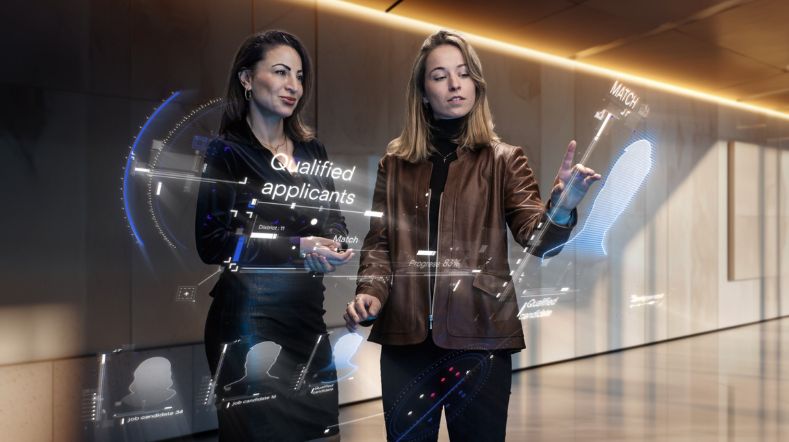
How to successfully implement new technology at work
Are you keen to deploy new technological developments within your organisation? Their success depends heavily on how employees deal with them. Wouter van der Torre, researcher on productivity and sustainable employability at TNO, offers four smart tips.
Entrepreneurs and managers often focus mainly on how technology advances the organisation. Yet, according to Van der Torre, it is also very important that it positively affects employees' tasks and working conditions. 'Work should remain fun and challenging, and it is important that your employees experience autonomy. That is certainly important in these times when it is difficult to find staff,' Van der Torre explains.

'If employees are not informed until implementation, you run the risk that the solution does not match the situation on the workplace.'
Tip 1: Select the right technology solution
Will you go for artificial intelligence, robotisation or business intelligence after all? Choosing a technology should suit your organisation. Therefore it is wise to involve employees in this choice from the beginning. Van der Torre explains that they often get involved far too late. 'If they are not informed until implementation, you run the risk that the solution does not fit the situation on the workplace.'
A big advantage of involving employees early is that they feel much more responsible for a successful implementation of the technology. 'You can make an open call, but also actively involve people to think along,' Van der Torre explains.
Tip 2: Determine the impact of the technology
Deploying a new technology always brings changes to the workplace. Companies often map out what the technology means for their products, services and work processes, but less attention is paid to the impact on employees. 'Safety is considered, but not whether employees keep a varied range of tasks, and can work independently and autonomously. You should also consider that in the business case for purchasing a new technology,' says Van der Torre.
That is why it is necessary to carry out an impact assessment. This allows you to evaluate exactly how the technology will affect day-to-day reality.
Note that the impact assessment is not only for entrepreneurs or managers. It is important to include technology suppliers, innovation managers, the HR department and employees themselves.
Monitoring Work Situation
Read more about changing the labour situation and its impact on the productivity, innovativeness and health of working people in the Netherlands.
Tip 3: Use the Technology Impact Method (TIM)
Of course you can carry out such an impact assessment all by yourself, but then you run the risk of overlooking issues. That is why TNO has developed the Technology Impact Method (TIM): a framework for thinking to determine the impact of technological possibilities on products and services, work processes and employees. This uses interviews and literature research, among other things. 'You can also start at the other end of the model and then look at where you have too few employees, to determine where you can automate,' says Van der Torre.
He explains how TNO used this method between 2020 and 2021 to determine the impact of technology on the work of mechanics in the agrifood and network management sectors. This showed that data was going to play an increasingly important role in the maintenance and repair work of mechanics in the sector. It also revealed that it would become more important to work more closely with suppliers.
TNO also revealed that in the future, mechanics would need (basic) digital, analytical and communication skills, in addition to their existing knowledge, to make optimal use of technological developments. This aspect can be included in training policy and employee recruitment and selection.
Tip 4: Provide development opportunities
New technology will cause jobs to change, in some cases they will also become less satisfying for employees. Van der Torre illustrates this with an example of a logistics company that switched to a new way of order picking. ''All front-end processes have been automated, the only thing left to be done by a human is preparing the parcels for dispatch. Then you are left with such a hollowed-out job.''
He argues that it is very important as an organisation to be mindful of offering interesting and varied work. 'Development opportunities are central to this,' Van der Torre explains. 'These are not the same for everyone, but employees need to keep developing themselves. This way, you are also prepared for the introduction of new technology.'
This can be done, for instance, with TNO's WEBA (well-being at work) tool. According to this method, a job should be complete and offer variety, challenge and autonomy. Furthermore, the physical and mental load should not be too high, and the work should offer social and functional contact opportunities. 'As an organisation, you have to be willing to make the job more interesting.'
Get inspired
TNO Announces the launch of ObjectivEye


Prospective Life Cycle Assessments for future-proof product design


Knowledge advantage in SSbD offers opportunities for Dutch chemical companies


The future of chemicals is Safe and Sustainable by Design


SSbD presents significant opportunities for the Dutch chemical sector to maintain its leadership position



